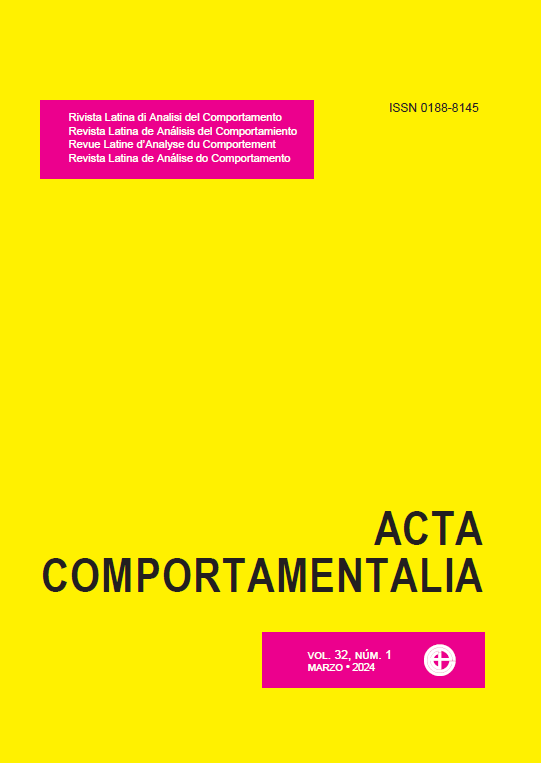The Effect of Stimulus Control During Pairing on the Emergence of Bidirectional Naming
DOI:
https://doi.org/10.32870/ac.v32i1.87864Keywords:
stimulus control, pairing, bidirectional naming, emergency, tact, figures selectionAbstract
The aim of this research was to analyze the effect exerted by the stimulus control in a pairing observation procedure on the responses that emerged in tact and selection probes as components of bidirectional naming, depending on the coherence of stimulus control between pairing and probes. In Experiment 1, eight adults were exposed to a figure-spoken word pairing phase and subsequently to tact and selection probes. In the pairing and tact probe, the number of stimuli presented in each trial was manipulated (one by one -successive- or four by four -simultaneous-) in four experimental conditions (with coherence: successive-successive and simultaneous-simultaneous; without coherence: successive-simultaneous and simultaneous-successive). Four randomized sets per condition were used with each participant, consisting of 16 figures and 16 words grouped into four pairs per set. Tact and selection emerged in all participants, regardless of stimulus control. The median of correct selection responses was higher in the conditions without coherence (23.5; Wilcoxon test) and in the conditions with simultaneous pairing. In Experiment 2, the procedure was identical to Experiment 1, except those eight different adults participated and animal sounds-spoken words were paired. The tact and selection response emerged with all eight participants and better tact results were obtained in the conditions with simultaneous pairing.
Downloads
Downloads
Published
How to Cite
Issue
Section
License

<a rel="license" href="http://creativecommons.org/licenses/by-nc-sa/4.0/"><img alt="Licencia de Creative Commons" style="border-width:0" src="https://i.creativecommons.org/l/by-nc-sa/4.0/88x31.png" /></a><br />Este obra está bajo una <a rel="license" href="http://creativecommons.org/licenses/by-nc-sa/4.0/">licencia de Creative Commons Reconocimiento-NoComercial-CompartirIgual 4.0 Internacional</a>.






